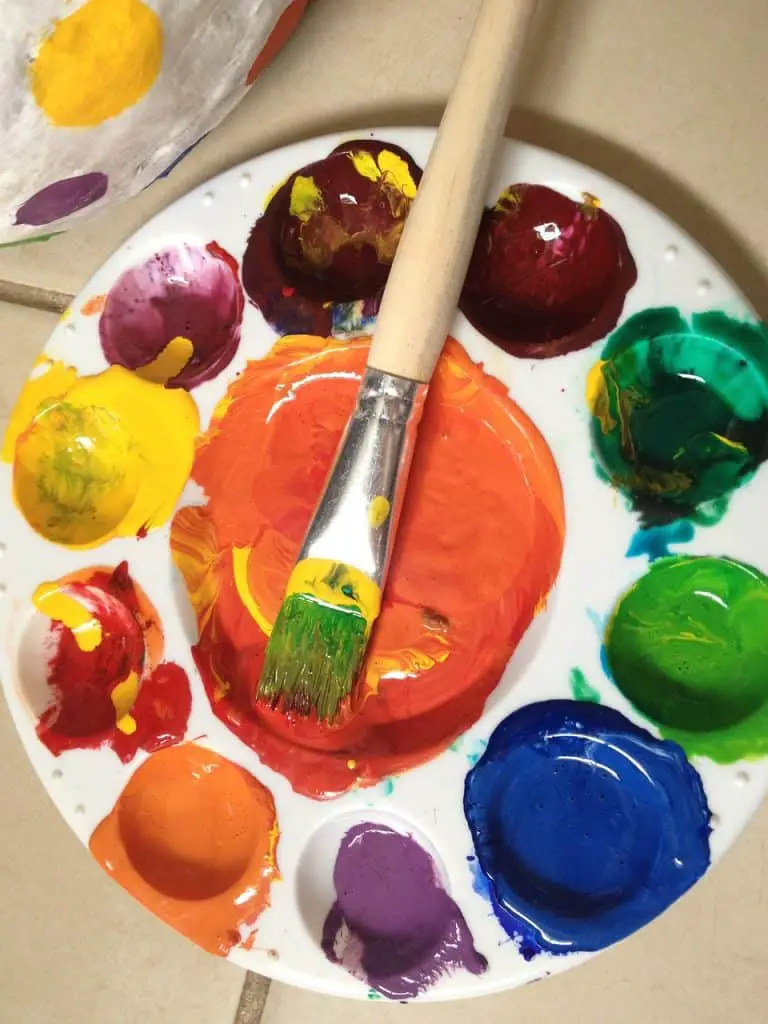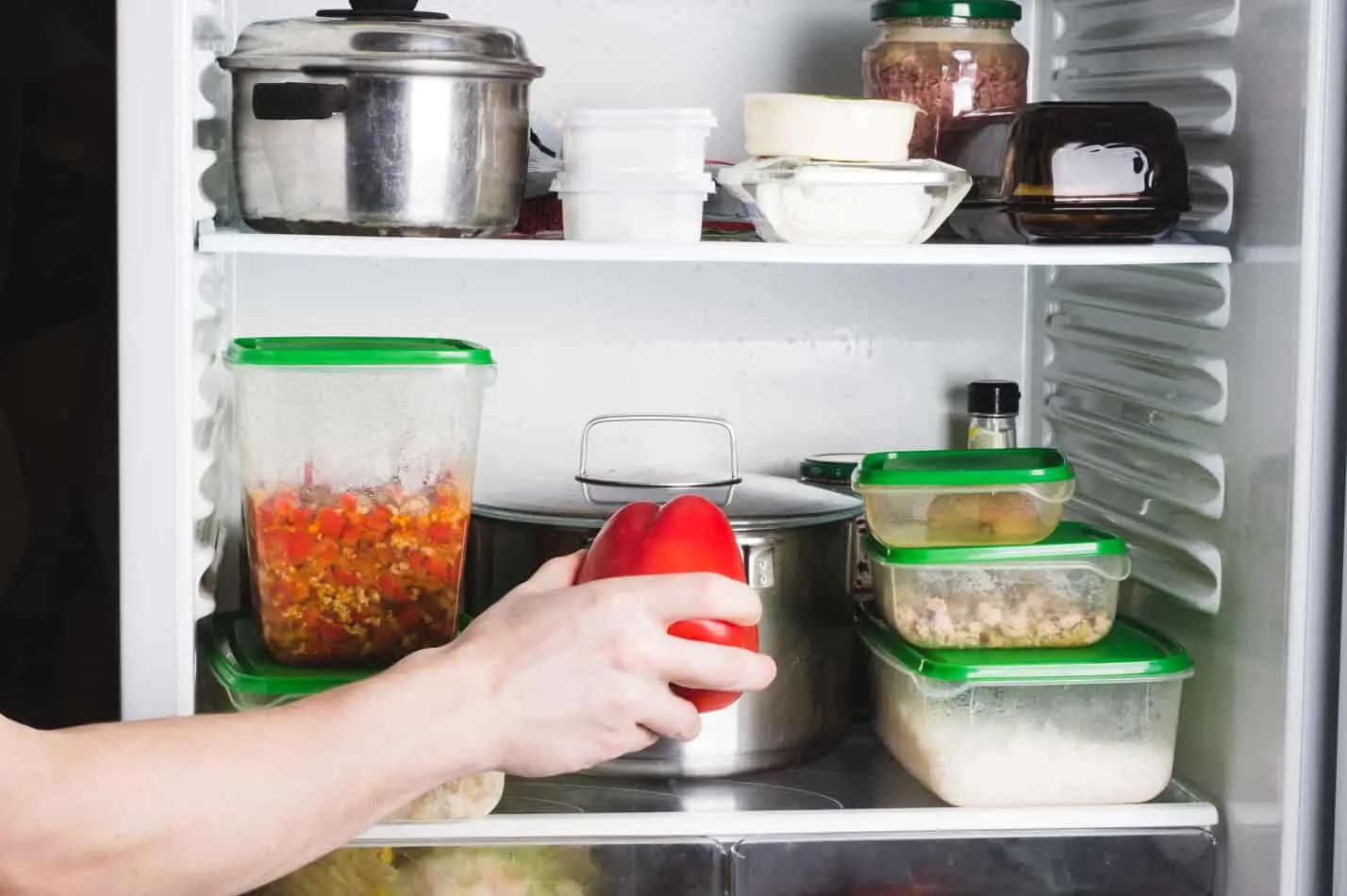Sometimes when we are not quite done with our painting or project, we often don’t know what to do with the leftover paint.
Some artists just discard of it, but many people wonder if you can refrigerate your acrylic paint, and the answer might surprise you. Can we actually refrigerate acrylic paint? Yes, you can definitely refrigerate your acrylic paint, but I only recommend for a period of no longer than a few days at a time.
We will go over everything you need to know about storing your acrylic paint in the refrigerator below. Enjoy!

In the past when I wasn’t done with my painting, I would often just throw out any leftover paint, but then I found a cool life hack. You can actually put your palette or containers in the fridge and take them out the next day, wait a few hours for the pint to settle back to room temperature, and wah-lah! you can carry on with your painting or project.
The reason why I recommend doing this only a once or twice at a time, is because after a while the paint will lose it’s texture and component if you keep changing the temperature of it, such as switching from refrigerator temperatures to room temperatures more than once or twice. I recommend doing this only to finish a project or for a 1 day pause, but never to store your acrylic paints in the fridge.
A helpful tip for not over pouring paint onto your palette, is to just start small and add more paint as you go on. You might want to do this hack if for example you mixed the perfect color, or you have so much leftover paint, that it’s be a shame to waste it all. For smaller amounts, I don’t really recommend putting it int he refrigerator.
How to Store Acrylic Paint in the Refrigerator
Well, if you are planning to put your palette straight in the fridge, you can use saran wrap to cover it tightly so it’s nice and sealed. If you plan on transferring your paint into a container, then you can use small mason jars if you have any, or even little tupperware.
Whatever you decide to use, make sure it’s covered and sealed tight. When you’re ready to paint again, take it out and let it sit for about an hour or so, to get that smooth creamy texture back. If you don’t wait long enough, it might still be hard and clumpy which can ruin your painting.
You also want to mix it when you take it out of the refrigerator to get things going again. You can do this with a palette knife or even a sturdy paintbrush.
Some Tips
Use Tupperware containers to store your paint. Keep a few containers specifically for your left over paint jobs. This is particularly useful if you have colors that haven’t been mixed yet and want to store them for later.

Can Acrylic Paint be Microwaved?
You might be in a situation where your acrylic paint or even the bottle dried up and are wondering if you can microwave your acrylic paint to kind of loosen it up right? Well, not can it burn the bottle but the microwave makes the water molecules in your acrylic paint move very fast, therefore drying the paint. I would not advise putting a very dried out bottle or even hardened paint in the microwave.
Above I talk about leaving your paint out for a bit to thaw out and get soft after your take it out of the refrigerator, and I know some might think to just throw it in the microwave for even a few seconds, stir it, and you’re all set. But even if you manage to not hear weird sounds from your microwave, once you take the paint out it won’t be long before it dries out, making your effort counterproductive.
If you believe your acrylic paints are not too dry to save, a simple way of “restoring” them is to add a little bit of water, and mix it with your brush or palette knife. If that doesn’t work, then you can get some paint thinner like this one, to help restore the texture. I have personally used this one from Amazon and I only needed a small amount to get things going.
Restoring Hardened Paint
First and most importantly, make sure the paint is salvageable. If it’s too dry and completely hard, there’s no hope.
However, if it’s simply a little thick, you can restore it with water and paint thinner. Tap your finger or a brush against the paint to gauge how far gone the paint is.

Keep kneading the paint until it’s workable. Add water and paint thinner and keep mixing. If you need to, set the paint down on a sturdy surface where you can get enough leverage to really drive the paint with your hands.
Use a circular force and continue pressing your paint. If it’s still hard after continued pressing, mixing, paint thinner, and water, your paint might be too thick to revive.
Final Thoughts
So, whether you need to store you paints in the refrigerator overnight, or you need to restore your dried up acrylic paint, I hope this article gave you all the tips your need! Check our my other articles for all you need to know about painting with acrylics.

